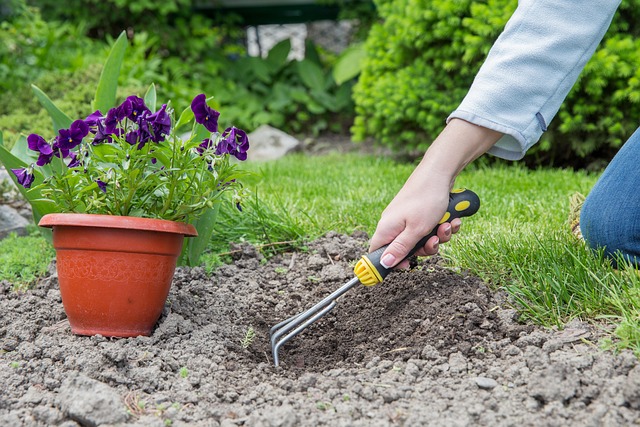Setting up a home nursery is an exciting project, but it can also feel overwhelming when you start thinking about everything that needs to be done. Where should you begin? What are the must-haves? And how can you make sure the space is both practical and cozy? Whether you’re preparing for your first baby or updating an existing space, this guide will walk you through each step, making the process smooth and enjoyable.
1. Clear Out the Space
Before you start decorating, you need a blank canvas. That means clearing out any existing furniture, old storage items, or anything else that doesn’t belong in a nursery. If the room has been used for storage, guest space, or just a catch-all for miscellaneous items, this step might take longer than expected.
If you’re dealing with a lot of clutter, consider hiring a dumpster from wasteremovalusa.com to make disposal easier, especially for larger items like old furniture or flooring materials. Once the room is empty, you’ll have a better idea of the space you’re working with and can start planning the layout.
2. Choose a Theme or Color Scheme
Now comes the fun part—deciding how you want the nursery to look and feel. Some parents go for a themed nursery (think woodland animals, space, or minimalist Scandinavian style), while others prefer a simple color scheme. Whichever direction you choose, pick colors and patterns that are calming and versatile.
Soft neutrals work well if you want a timeless, gender-neutral space, while pastel tones can add a touch of warmth and charm. If you’re planning to incorporate bold colors, use them as accents rather than on every wall to keep the room from feeling too overwhelming.
3. Invest in the Right Furniture
The essentials for any nursery include:
- Crib – A sturdy, safe crib that meets current safety standards is non-negotiable. Consider a convertible crib that can grow with your child.
- Changing table or dresser with a changing pad – A dedicated spot for diaper changes will save your back and keep everything organized.
- Comfortable chair – A rocking chair or glider is a lifesaver for late-night feedings and cuddle sessions.
- Storage solutions – Shelves, baskets, and drawer organizers will help keep clothes, diapers, and baby essentials within easy reach.
When choosing furniture, think about long-term use. Some items, like a dresser, can grow with your child, while others, like a bassinet, will only be needed for a short time.
4. Make the Space Functional
A beautiful nursery is great, but it also needs to be practical. Consider the daily routine and how you can make life easier. Position the crib away from windows to avoid direct sunlight and drafts. Keep the diaper-changing essentials close by, so you’re not scrambling in the middle of the night. And make sure there’s enough lighting—overhead lights for visibility and soft lamps for nighttime feedings.
Think about where you’ll store baby clothes, blankets, and toys. Drawer dividers can help keep tiny clothes organized, while open bins make it easy to grab things quickly.
5. Ensure Safety is a Priority
Safety is a major consideration in any nursery. A few key things to check:
- Secure furniture to the wall – Dressers and bookshelves should be anchored to prevent tipping.
- Choose cordless window coverings – Cords from blinds or curtains can pose a strangulation risk, so opt for cordless alternatives.
- Check for sharp corners – Use corner protectors on any sharp furniture edges.
- Baby-proof outlets – Install safety covers on electrical outlets.
- Keep small items out of reach – Anything that could be a choking hazard should be stored where little hands can’t grab them.
It’s worth doing a thorough walk-through of the space with safety in mind before your baby starts moving around.
6. Add Soft Touches for Comfort
The nursery should be a cozy and inviting place for both you and your baby. Soft rugs, blackout curtains, and plush blankets can make the space feel warm and welcoming.
Consider adding a white noise machine to help block out background noise and promote better sleep. A dimmable nightlight is also a great addition, making nighttime feedings and diaper changes easier without fully waking the baby.
7. Set Up a Nursing or Feeding Station
If you’ll be nursing or bottle-feeding, set up a comfortable feeding area with everything you need close by. Keep a side table next to the chair for essentials like water, burp cloths, and snacks (you’ll be thankful for those during long night feeds). A small bookshelf nearby for baby books is also a great idea for incorporating storytime into your routine.
8. Personalize the Space
Adding personal touches makes the nursery feel special and unique. Framed artwork, wall decals, or a name sign above the crib can give the room character. Display meaningful items like a handmade blanket from a loved one or a few favorite books.
If you want to include a growth chart, consider a removable one that can move with you if needed. Customizing the nursery doesn’t have to mean big expenses—small details can make a big impact.
9. Stock Up on Essentials
Before your baby arrives, make sure you have everything you need stocked and ready to go. Some must-haves include:
- Diapers (newborn and size up, since babies grow fast)
- Wipes and diaper cream
- Swaddles and blankets
- Bottles and formula (if not breastfeeding)
- Baby clothes (onesies, sleepers, socks, hats)
- First-aid basics (thermometer, nail clippers, baby-safe pain reliever)
Having a well-stocked nursery will save you from late-night runs to the store in those early weeks.
10. Do a Final Walk-Through
Once everything is set up, take a step back and do a final check. Walk through the space as if you’re in the middle of a nighttime diaper change or feeding session—does everything you need feel within reach? Is the room easy to navigate in dim light? This final review will help you catch anything you might have missed before your little one arrives.
Your Nursery is Ready—Now Enjoy It
Creating a home nursery is about more than just putting together a beautiful space—it’s about preparing for some of the most precious moments you’ll experience. From late-night snuggles to early morning giggles, this room will become the heart of so many memories. Take a deep breath, enjoy the process, and remember that perfection isn’t the goal—comfort and practicality are what truly matter.









